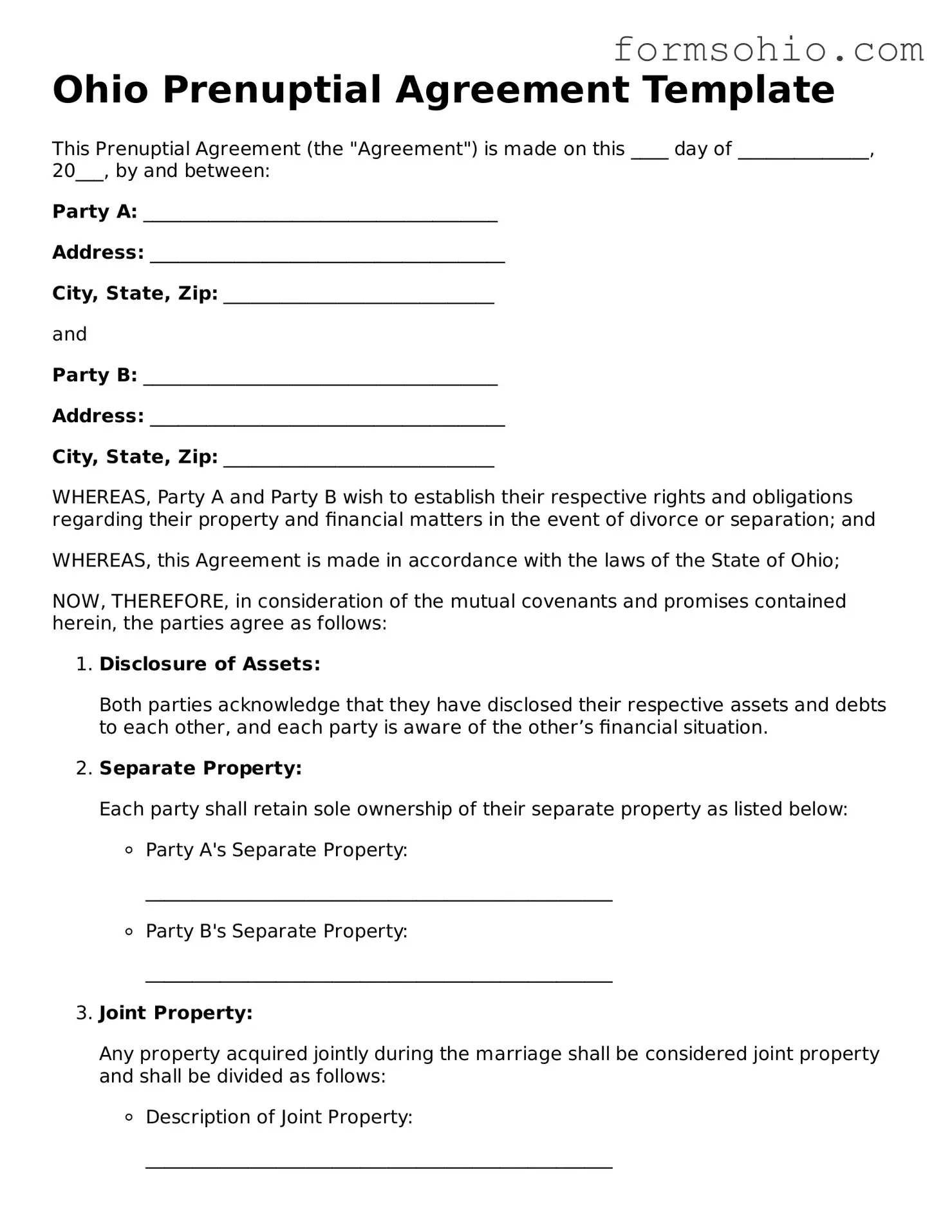Ohio Prenuptial Agreement Template
This Prenuptial Agreement (the "Agreement") is made on this ____ day of ______________, 20___, by and between:
Party A: ______________________________________
Address: ______________________________________
City, State, Zip: _____________________________
and
Party B: ______________________________________
Address: ______________________________________
City, State, Zip: _____________________________
WHEREAS, Party A and Party B wish to establish their respective rights and obligations regarding their property and financial matters in the event of divorce or separation; and
WHEREAS, this Agreement is made in accordance with the laws of the State of Ohio;
NOW, THEREFORE, in consideration of the mutual covenants and promises contained herein, the parties agree as follows:
- Disclosure of Assets:
Both parties acknowledge that they have disclosed their respective assets and debts to each other, and each party is aware of the other’s financial situation.
- Separate Property:
Each party shall retain sole ownership of their separate property as listed below:
- Party A's Separate Property:
__________________________________________________
- Party B's Separate Property:
__________________________________________________
- Joint Property:
Any property acquired jointly during the marriage shall be considered joint property and shall be divided as follows:
- Description of Joint Property:
__________________________________________________
- Division Plan:
__________________________________________________
- Spousal Support:
In the event of divorce, neither party shall be entitled to spousal support unless otherwise agreed upon at that time.
- Governing Law:
This Agreement shall be governed by the laws of the State of Ohio.
- Amendment:
This Agreement may only be amended or modified by a written agreement signed by both parties.
- Severability:
If any provision of this Agreement is deemed invalid or unenforceable, the remaining provisions shall continue in full force and effect.
- Entire Agreement:
This Agreement constitutes the entire understanding between the parties and supersedes all prior discussions or agreements.
IN WITNESS WHEREOF, the parties hereto have executed this Prenuptial Agreement as of the date first above written.
Party A Signature: ____________________________ Date: ________________
Party B Signature: ____________________________ Date: ________________
